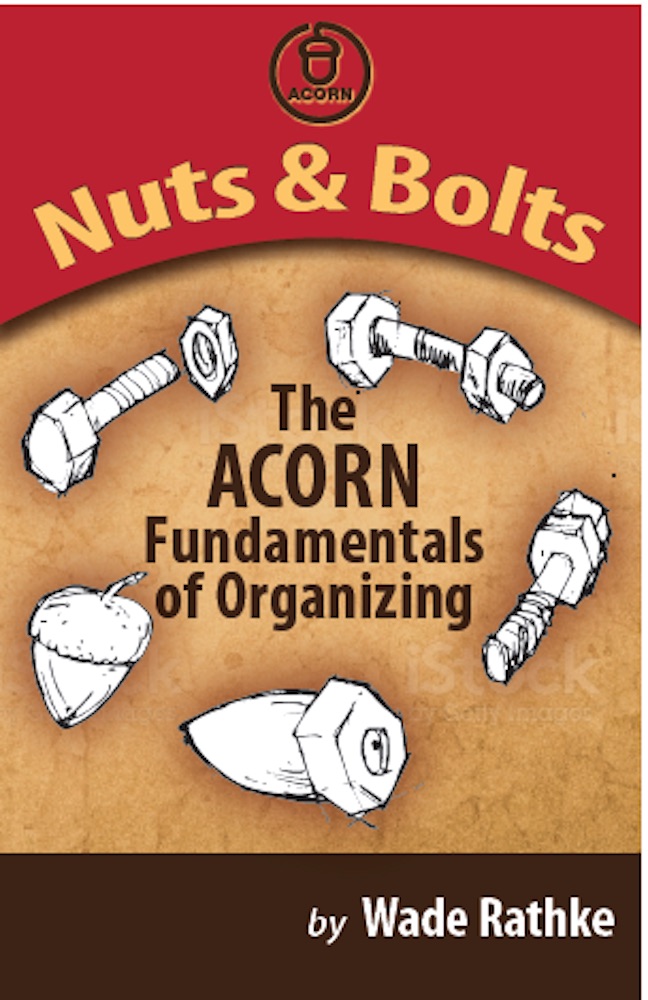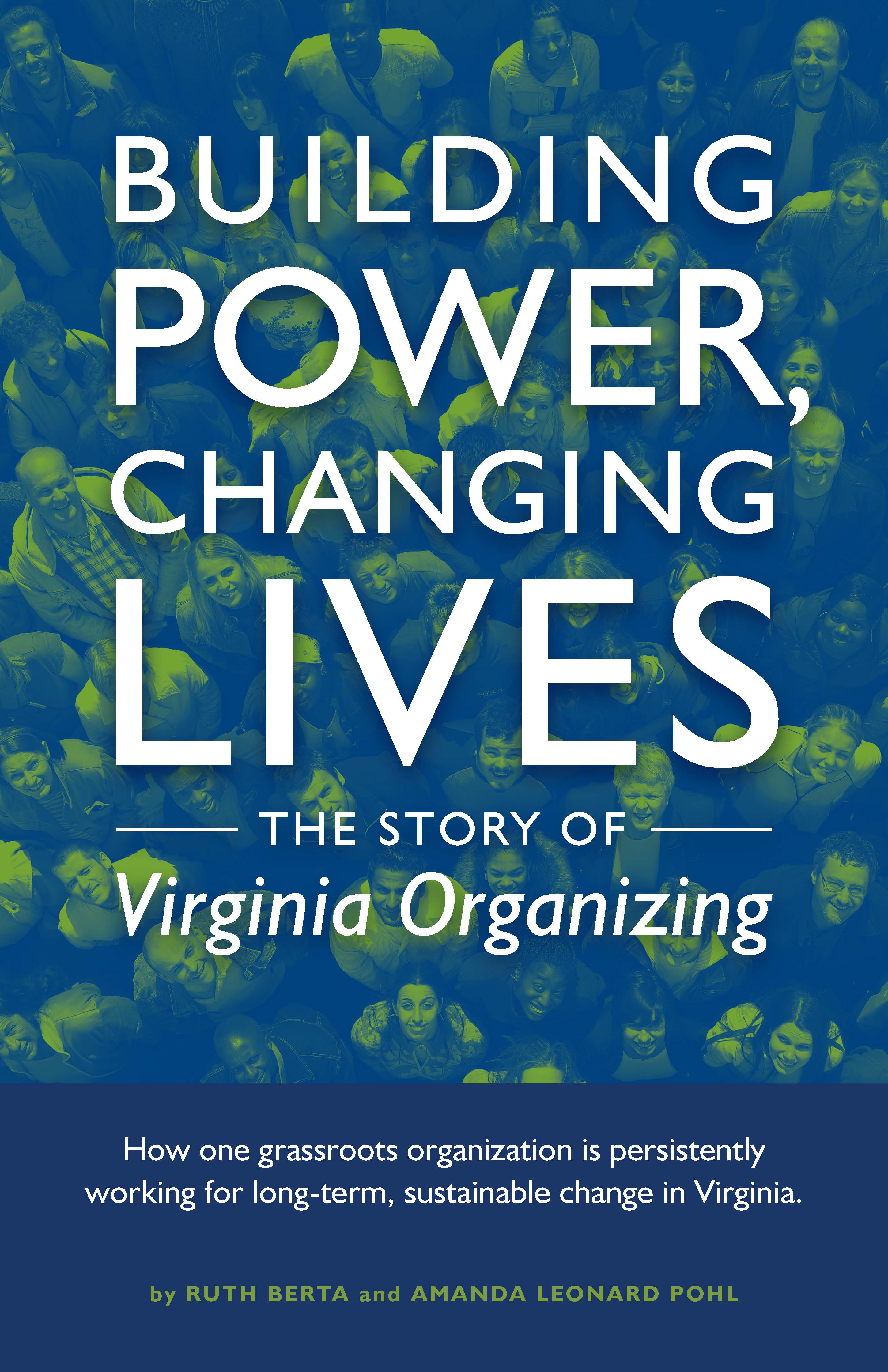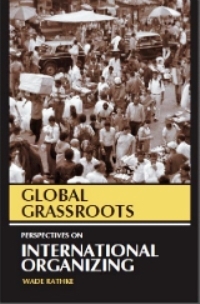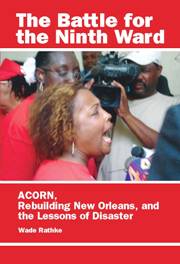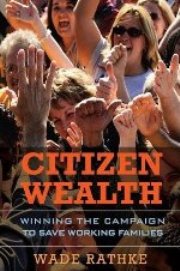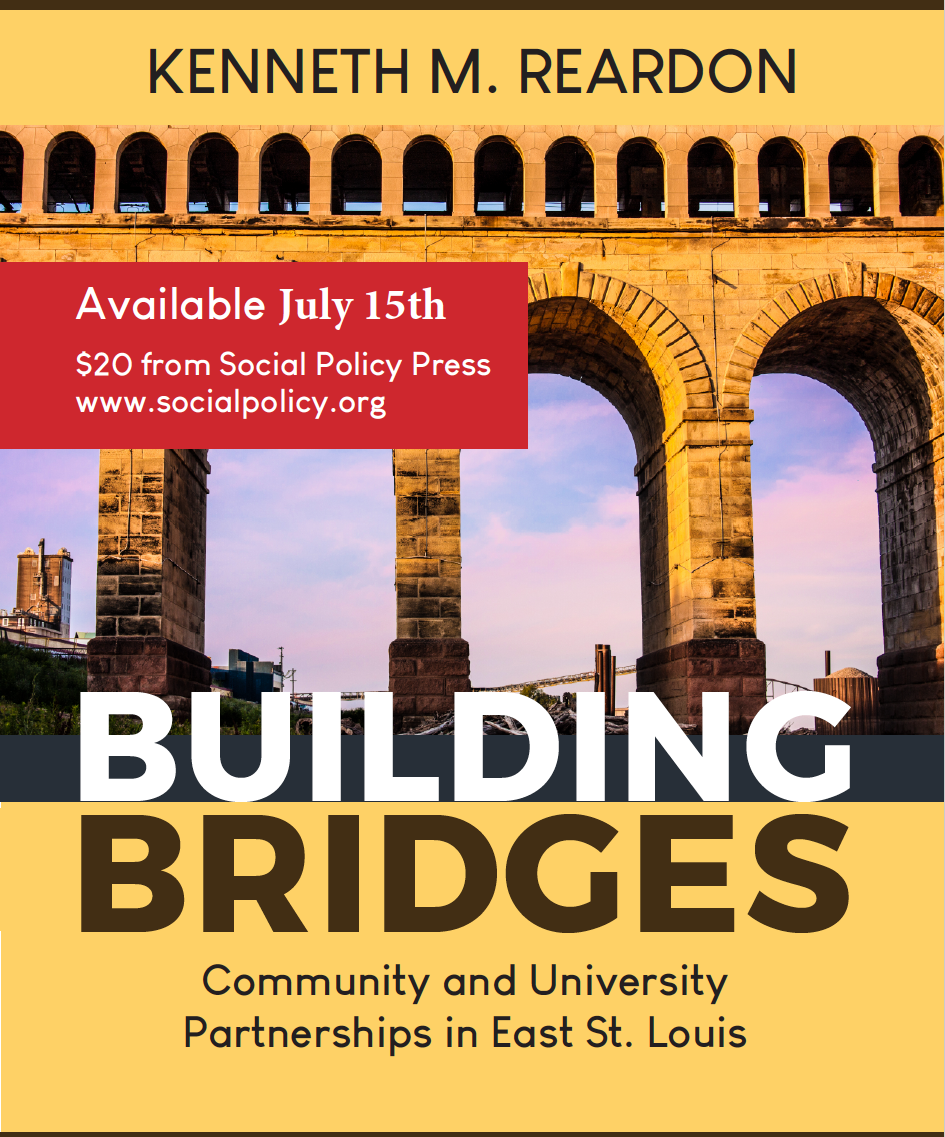EXCERPT - How to Scale-up Union Organizing
Written by Eric Blanc
An excerpt from We Are the Union: How Worker-to-Worker Unionism is Revitalizing Labor and Winning Big (UC Press, 2025)]
Among those wings of the labor movement still interested in unionizing new workers, the basic case for how to scale up today remains the same as it’s been since the 1990s: fund good organizing. Many union organizing directors and staff organizers made this case to me, while complaining of labor’s insufficient focus on growth. As one regional organizing director in the Midwest put it, “We don’t need to reinvent the wheel, we know how to win—but we need real resources to make that happen.”
In many ways I fundamentally agree with this case: unions do need to make a dramatic investment in rank-and-file intensive organizing. And the impasse of the AFL-CIO New Voices project doesn’t necessarily mean its strategy—better funding, better tactics—couldn’t work in more favorable circumstances. It would be great news for workers if staff-intensive unionism had a plausible path to scaling up. All other things being equal, more staff support and more resources is a very good thing for workplace organizing. US labor would almost certainly be in a better position today if all unions from the 1990s onwards had adopted ambitious funding goals and time-tested organizing techniques. The fact that most unions didn’t do so is, on the face of it, puzzling. Why wouldn’t unions lean into an organizing approach that had proven its effectiveness? Indeed, in his incisive 2010 book on union revitalization, Julius Getman wrote that “it is a mystery why so few unions” adopted organizing methods that had a clear track record of winning.
Labor scholars have detailed numerous factors that help explain this puzzle, including institutional routinism, risk aversion, organizational atomization, leadership bureaucratization, an over-reliance on establishment Democrats, members’ lack of interest in external organizing, and officials’ fears of getting voted out if new organizing investments don’t pan out or if an influx of new, empowered members vote in different leaders. But one central factor has yet to receive sufficient attention: high organizing costs create a hard ceiling on growth and disincentivize best practices. Though the costliness of unionization isn’t necessarily the main hindrance for stick-in-the-mud unions, it does go a long way towards explaining the difficulties of organizing-focused unions to pose a viable alternative by spreading widely.
Failing to fully address issues of cost and scale, too many analysts tend to conflate the question of how to win specific drives with the question of how to win widely. For example, one piece recently argues that labor’s leap forward “will come from lots of small-scale organizing of the kind this site seeks to highlight and enrich, until that organizing reaches a larger scale.” Most influentially, since the early 1990s labor scholar Kate Bronfenbrenner has argued, on the basis of extensive quantitative research, that by creatively deploying rank-and-file intensive tactics and by providing one staffer for every hundred targeted workers, unions could still win despite employer opposition. “The recommitment of the labor movement to organizing is not a futile effort,” she and co-author Tom Juravich concluded. “If unions use the right tactics, they can still win, despite the odds.” They could do so at scale, Bronfenbrenner argued, by taking on more and more drives and larger and larger campaigns. She acknowledged that this proposed organizing approach was “extremely staff and resource intensive,” but insisted that a “lack of resources cannot explain the failure of the majority of unions to organize more aggressively and effectively,” since the “costs of not organizing”—that is, continued labor decline—are far greater.
The basic problem with this type of reasoning was noted by organizer Benjamin Day: “By focusing on the means by which certain union election campaigns win and others fail, the organizing literature tends to get mired in a microeconomic perspective that is occasionally, but illegitimately, generalized to the macroeconomic level (i.e., that proliferating winning campaign tactics can reverse [unions’ overall] decline).” As union strategist Richard Yeselson observed in his 2013 article “Fortress Unionism,” the past two decades of experience had shown that although labor did know how to win through well-funded comprehensive campaigns, it turned out to be “economically and logistically impossible” for unions to initiate enough of them to turn things around. He pointed to a simple reason why: in today’s decentralized economic conditions it “takes too much time, and it costs too much in money and staff resources.”
Not Enough Funds
While improving the tactical quality of union campaigns is crucial, it isn’t enough on its own to organize sufficiently large workers for systemic change. To win the unionization war, the harder question is how to exponentially increase the quantity of unionization battles. So it’s worth asking: could this ambitious goal be reached via staff-intensive means by fully tapping organized labor’s coffers? Let’s look at the data. Researcher Chris Bohner found that unions today have roughly $13.4 billion dollars in liquid assets. This, as the author notes, is only “a reasoned approximation,” which likely somewhat overstates labor’s treasuries. Nevertheless, it’s clear from Bohner’s research that union assets have grown considerably over the past decade, and that much of this could go towards generating a robust turn to new organizing.
How far could these assets take labor organizing using staff-intensive means? Though organizing costs vary widely—by company, industry, and degree of employer opposition—the available data suggests that it costs unions between $2,020 and $4,012 on average to organize one worker. Based on the $3,016 midpoint of this cost range, if unions were to use 30 percent of their liquid assets on staffed-up new organizing this would translate into unionizing roughly 1.33 million workers. That would only return labor to about 2015 density levels: 11 percent of the US workforce would be in a union. And using the entirety of labor’s liquid assets on organizing would only return labor to 2002 union density, roughly 13.2 percent of the workforce. These would be very significant steps forward, but far below the type of growth needed to decisively beat back corporations and equalize America.
Moreover, these funds aren’t readily on hand, awaiting only the decision of national labor leaders to start prioritizing new organizing. As Bohner shows, the vast majority of labor’s assets are controlled by thousands of autonomous locals, many of which are deeply entrenched in their risk-averse, service-oriented ways. About 72 percent of labor spending is by locals, 28 percent by national unions, and only .0006 by the AFL-CIO.9 This means that today, and for the foreseeable future, even the most ambitious union leaders will have to make hard choices about how to allocate scarce resources. One of the reasons so few unions adopt best practices is that it’s expensive to do so. Case in point is the history of the perpetually cash-strapped hotel organizing powerhouse HERE, whose money troubles led it to merge with UNITE in 2004. Yet in part because HERE’s organizing model—which uses lots of staff to train up and support lots of strong worker leaders—remained so costly, much of the UNITE wing of the merger jumped ship only five years later. Among the many reasons for this messy divorce, leaders from UNITE publicly objected to what they viewed as excessive organizing costs; in turn, HERE leaders, not unjustifiably, accused their rivals of chasing shortcuts and of cutting unacceptable deals with employers in the hopes of easing unionization.
Ineffective organizing often has a material base, not just a strategic one. Because it takes so much time, money, and effort to train up large numbers of good staff organizers to identify and guide workers, there’s always a strong incentive to cut corners by running hollow campaigns lacking a focus on rank-and-file leadership development. One health care union staffer explained the dynamic as follows: In my experience, the problem in [our local] isn’t that some of our leaders support a McAlevey [deep organizing] strategy and others in leadership have a different theory, it was more like everyone in leadership knows the right things to say about building a committee and worker leadership and structure tests [public actions to assess a drive’s level of support], but because we’re all extremely busy and because we don’t know how to train organizers well, we just don’t do it, or at least not consistently.
The few existing quantitative financial analyses of union campaigns point to a similar story. Consider Dave Kamper and Alyssa Picard’s LM-2 analysis of the rightfully celebrated Las Vegas health care Local 1107 organizing led by Jane McAlevey. As the authors note, “however valuable McAlevey’s book is, it does not suggest a solution to the problem of how to pay for organizing—and if we want to rebuild the labor movement, we need to find an answer soon.” McAlevey herself acknowledges this in the epilogue of her first book’s first edition: “We know how to do the work—it’s where the money will come from that’s the immediate challenge. That’s what keeps me up in the middle of the night these days—it’s that I can’t yet sort out how we’ll pay for what I am confident we actually can do.” My book is, among other things, an attempt to find a solution to this challenge.
Recent Experiences of Scalable Organizing
Fortunately, we no longer need to point only to the 1930s for evidence that a cheaper model for building union power is available. Recent experience shows that worker-to-worker campaigns—unlike both staff-intensive unionism and shallow campaigning—are both scalable and powerful. It was precisely because of the need to rapidly scale up that Starbucks Workers United and the NewsGuild were pushed to innovate new organizing structures. “The moment we’re in has obliged us to train [workers] quickly, but it’s also allowed us to train them effectively,” notes Stephanie Basile at the NewsGuild, which unionized 9,741 workers in 212 new units from 2018 to 2023. “It’s almost like an intense bootcamp opportunity where you can get years of organizing experience in like a month right now.” As she indicates, an ability to swiftly forge good organizers depends not only on effective training techniques, but also on enabling workers to learn in struggle, by taking full ownership of their drives.
What about organizing costs? Financial accounts of specific drives are unfortunately hard to come by. But the available evidence suggests that today’s worker-to-worker efforts tend to be significantly cheaper than the roughly $3016-per-worker average of standard drives. A study of CWA District 4’s peer-to-peer organizing model in the 1990s found that costs were significantly lower than in staff-intensive efforts—a drive of 1,800 technical and clerical employees, for example, cost $290 per worker (inflation adjusted for today).
The recent experience of independent unions is also suggestive. It cost the Amazon Labor Union $14 per worker to win their union election at the JKF8 Amazon warehouse in Staten Island. For its part, the Burgerville Workers Union spent $40,000 total to win a first contract that covered about 170 workers, with many of its key provisions covering the entire 1,400-strong workforce. This comes out to $28.57 per impacted worker and $235 per fully covered worker. Even if self-initiated drives that affiliate with established unions and leverage staff support were to cost five or ten times more than their independent counterparts, this would still mean that worker-to-worker unionism is significantly cheaper than the prevailing model.
What about staffing ratios? Here the available data suggests clear differences between union models. In contrast with the 1-to-100 norm of staff-intensive unionism, staffer-less Burgerville workers unionized and won a contract at the first fast food chain in the country. And both SBWU (up through June 2022) and Amazon-JFK8 efforts had staff to worker ratios analogous to the low-cost movement unionism of the 1930s. UAW’s big recent drives in auto—especially at Mercedes—have also been very lightly staffed. To get a nationwide sense of differences between these two organizing models, we can look at yearly NLRB data to compare the numbers of new workers organized to the total number of staffers employed by unions. In 2023, the number of workers unionized per staffer was higher than in any other year for which I was able to find data—and almost double the average from 1990 through 2021. It makes sense to infer that 2023’s exceptional staffing ratio reflects worker-to-worker unionism’s rise.
Resources, capacity, and experience are essential for helping workers and social movements win. But these need to be leveraged in far more scalable ways. Established unions should start systematically providing tools and funds so that millions of workers can self-organize and train others. Unions can start seeding a far higher number of drives by leaning much more on rank-and-file leaders, by holding well-publicized mass trainings, by funding widespread salting at strategic targets, and by seizing high-momentum openings to spread unionization as widely as possible. In other words, the labor movement needs to finally start acting like a movement again.



